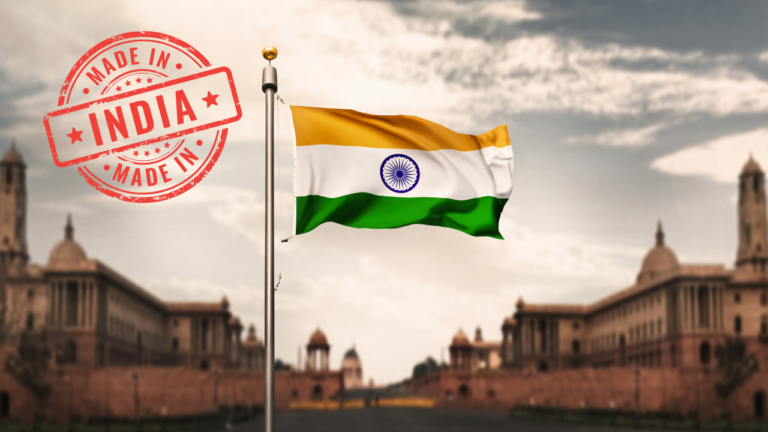In the vibrant and diverse market of India, marketing and branding play crucial roles in the success of businesses. Indian brands, from large corporations to emerging startups, invest significantly in marketing and branding activities to capture the attention of the country’s vast consumer base. This blog explores the spending patterns of big Indian brands on marketing and branding activities, the reasons behind such investments, and real examples of successful campaigns by prominent Indian brands.
Why Indian Brands Invest in Marketing and Branding
1. Building Brand Awareness
One of the primary reasons Indian brands invest heavily in marketing and branding is to build brand awareness. In a country with a population of over 1.3 billion people, standing out in the crowded marketplace is challenging. Effective marketing campaigns help brands create visibility and recognition among consumers.
2. Creating Brand Loyalty
Brands aim to cultivate a loyal customer base that repeatedly chooses their products or services. Through consistent branding efforts and engaging marketing campaigns, companies can foster emotional connections with consumers, leading to long-term loyalty.
3. Differentiating from Competitors
In highly competitive markets, differentiation is key to attracting and retaining customers. Marketing and branding activities enable brands to highlight their unique selling propositions (USPs) and distinguish themselves from competitors.
4. Expanding Market Reach
To tap into new markets and reach a wider audience, Indian brands invest in marketing activities such as advertising, digital marketing, and public relations. This helps them expand their customer base and increase sales.
5. Adapting to Changing Consumer Preferences
Consumer preferences are constantly evolving, and brands need to stay relevant. By investing in market research and innovative marketing strategies, brands can adapt to changing trends and meet consumer demands effectively.
Examples of Marketing and Branding Spend by Big Indian Brands
1. Reliance Jio
Reliance Jio, a subsidiary of Reliance Industries, revolutionized the Indian telecom industry with its aggressive marketing and branding strategies. Jio’s initial marketing campaign, “Jio Digital Life,” focused on providing affordable data and free voice calls, capturing the attention of millions. The company spent heavily on television ads, outdoor advertising, and digital marketing to promote its services.
2. Flipkart
Flipkart, one of India’s leading e-commerce platforms, has consistently invested in marketing to stay ahead of competitors like Amazon. Flipkart’s “Big Billion Days” sale is a prime example of its marketing prowess. The company spends significantly on advertising, celebrity endorsements, and social media promotions to create buzz around the event. The massive discounts and exclusive deals attract millions of shoppers, boosting sales and brand visibility.
3. Amul
Amul, a brand synonymous with dairy products in India, is known for its iconic and witty advertising campaigns. The brand’s investment in the “Amul Girl” campaign, which features topical and humorous advertisements on billboards and print media, has made it a household name. Amul’s consistent branding efforts have helped it maintain a strong presence in the market for decades.
4. Tata Motors
Tata Motors, a major player in the Indian automotive industry, invests heavily in marketing to promote its vehicles. The company’s “Made of Great” campaign, featuring international football star Lionel Messi, aimed to showcase the quality and reliability of Tata cars. The campaign included television ads, digital marketing, and social media promotions, helping Tata Motors strengthen its brand image and increase sales.
5. Hindustan Unilever Limited (HUL)
Hindustan Unilever Limited (HUL), one of India’s largest consumer goods companies, allocates substantial budgets for marketing and branding. HUL’s campaigns for brands like Surf Excel, Dove, and Lifebuoy are well-known for their emotional appeal and strong messaging. The company uses a mix of television commercials, digital marketing, and in-store promotions to connect with consumers and drive sales.
6. Paytm
Paytm, a leading digital payments and financial services platform, has invested heavily in marketing to build its brand. The company’s “Paytm Karo” campaign encouraged users to adopt digital payments, leveraging television ads, digital marketing, and influencer partnerships. Paytm’s marketing efforts have played a significant role in its widespread adoption and success.
7. Maruti Suzuki
Maruti Suzuki, India’s largest car manufacturer, spends significantly on marketing to maintain its market leadership. The company’s “Kitna Deti Hai?” campaign, which focused on the fuel efficiency of its cars, resonated well with Indian consumers. Maruti Suzuki uses a combination of television ads, print media, and digital marketing to reach its target audience.
The Impact of Marketing and Branding Spend
1. Increased Brand Recall
Significant investments in marketing and branding help brands achieve high levels of brand recall. Consumers are more likely to remember and choose brands that they see and hear about frequently.
2. Higher Sales and Revenue
Effective marketing campaigns drive sales and revenue growth. Promotions, discounts, and engaging advertisements attract consumers and encourage them to make purchases.
3. Enhanced Brand Image
Consistent branding efforts help build a positive brand image. Brands that invest in high-quality marketing and branding activities are perceived as trustworthy and reliable by consumers.
4. Market Leadership
Brands that consistently invest in marketing and branding often achieve market leadership. They set industry standards and influence consumer preferences, maintaining a competitive edge.
5. Customer Engagement
Marketing and branding activities engage customers through various channels, including social media, events, and interactive campaigns. Engaged customers are more likely to become loyal advocates for the brand.
Conclusion
In the dynamic and diverse Indian market, marketing and branding are essential for the success of businesses. Big Indian brands invest heavily in these activities to build brand awareness, create loyalty, differentiate from competitors, expand market reach, and adapt to changing consumer preferences. Examples from Reliance Jio, Flipkart, Amul, Tata Motors, HUL, Paytm, and Maruti Suzuki demonstrate the impact of strategic marketing and branding efforts. By prioritizing marketing and branding, Indian brands can achieve sustained growth, increased sales, and a strong market presence.




